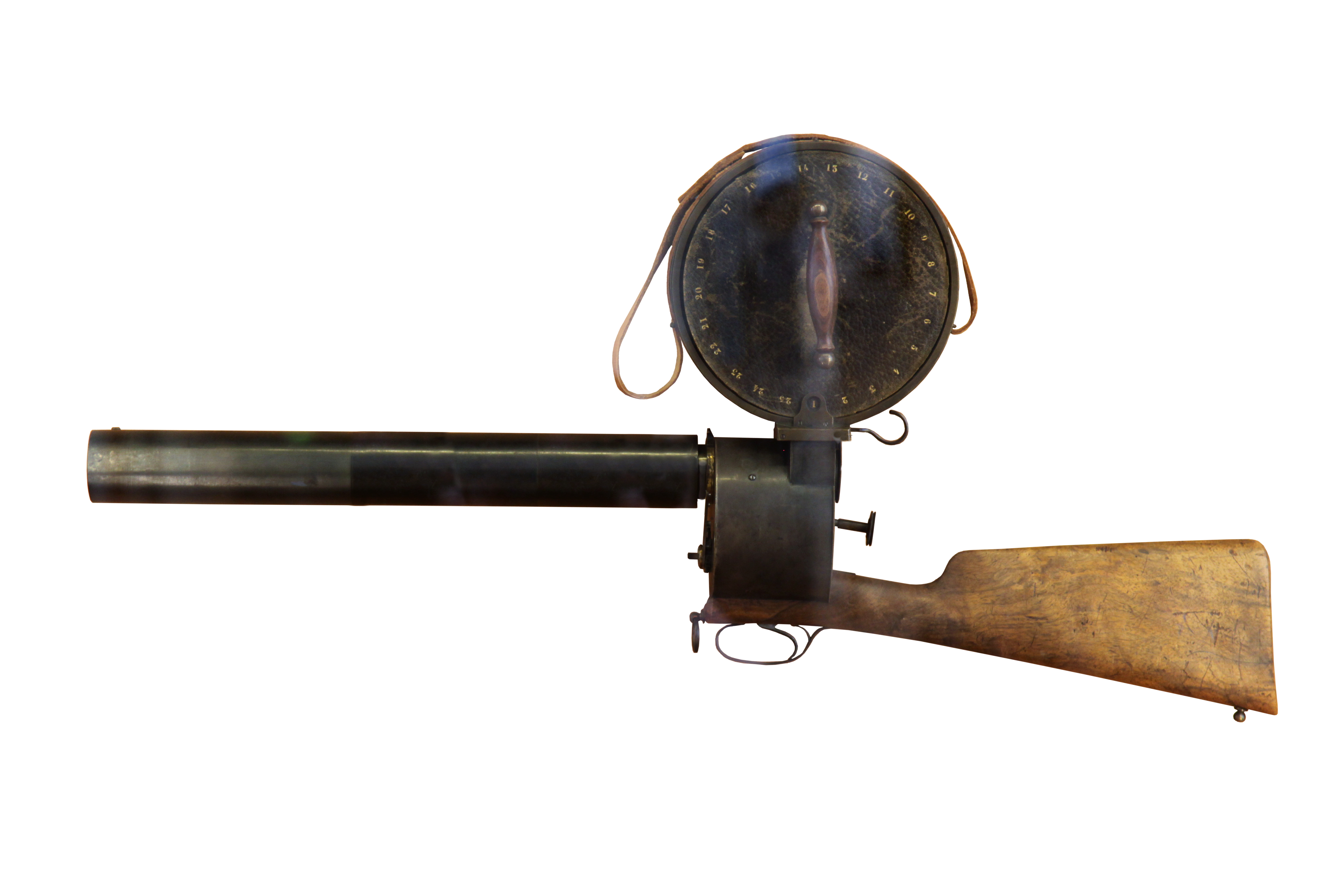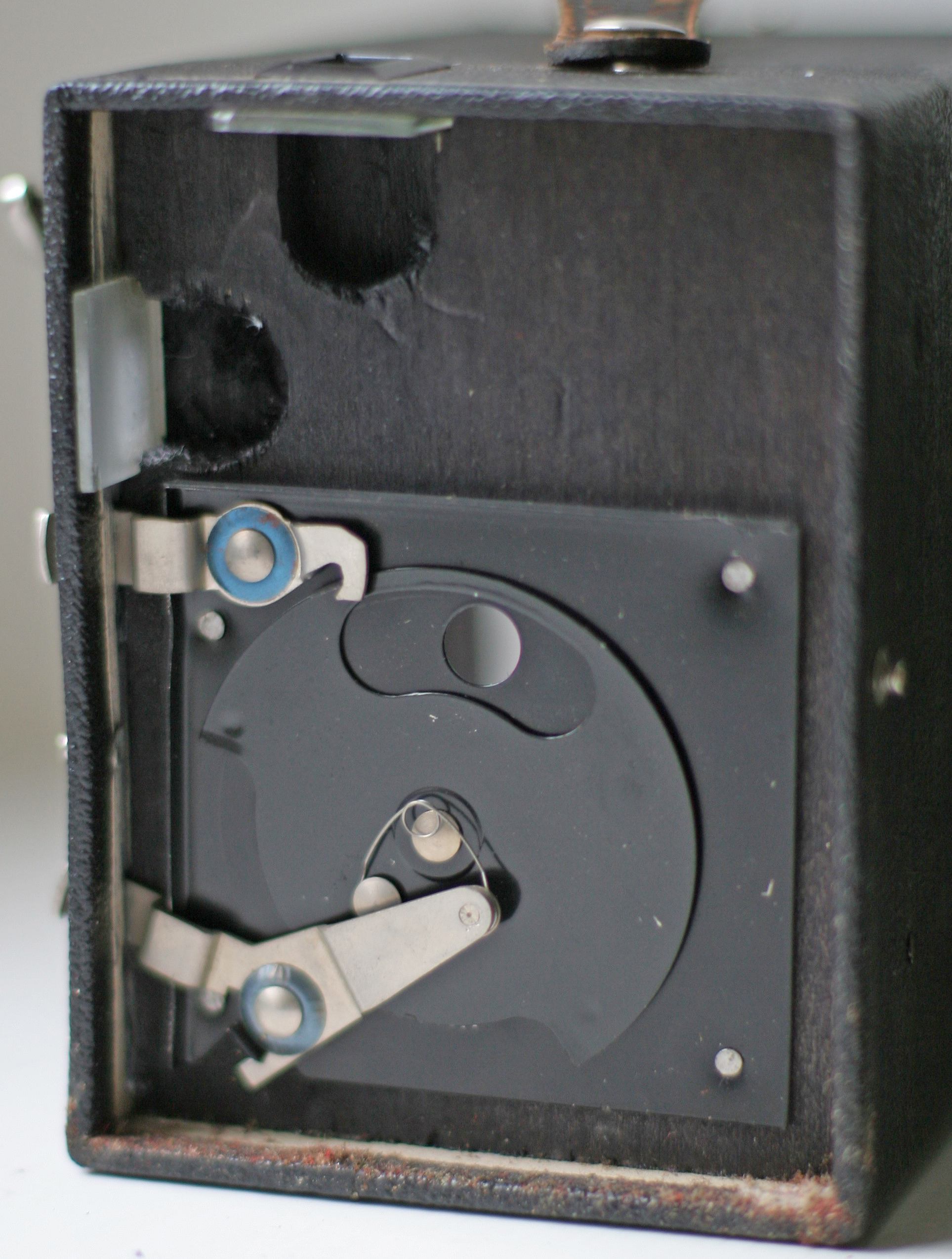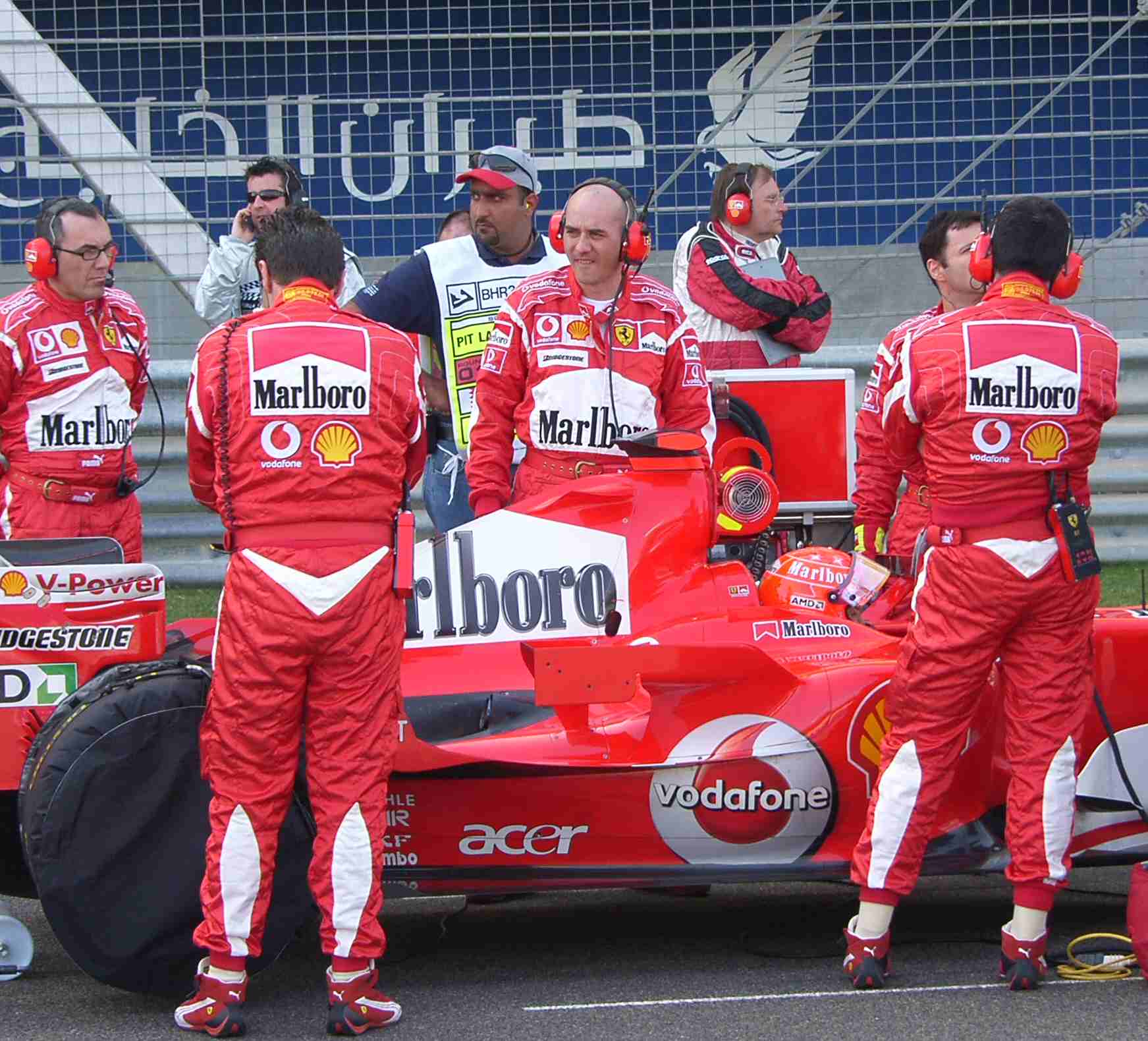|
Arriflex 435
The Arriflex 435 is a movie camera product line created by Arri in 1995 to replace the Arriflex 35-III line. The number reflects its position as a successor camera to the Arri III and the fact that it is designed for 35 mm film. The 435 cameras are specifically designed as MOS cameras, which means that they are conventionally considered to be too loud to record usable location sound. However, this also frees the camera up to be optimized for non-sync sound uses, particularly any filming which either doesn't require sound or shooting at non-sync speed, shooting in reverse, or ramping between different speeds. As such, its potential applications are widespread, and thus it is regularly used on music videos, commercials, second unit work on features, special effects work, and motion control, among other usage. Rival Panavision even owns more 435s for rental than Arri's own hire houses; Panavisions, however, can be converted to Pan-Arri 435s where they are modified to accept Panavi ... [...More Info...] [...Related Items...] OR: [Wikipedia] [Google] [Baidu] |
Arri
Arri Group () (stylized as "ARRI") is a German manufacturer of motion picture film equipment. Based in Munich, the company was founded in 1917. It produces professional motion picture cameras, lenses, lighting and post-production equipment. It is cited by Hermann Simon (manager), Hermann Simon as an example of a "Hidden champions, hidden champion". The Arri Alexa camera system was used to shoot several films that won the Academy Award for Best Cinematography, including ''Hugo (film), Hugo'' (2011), ''Life of Pi (film), Life of Pi'' (2012), ''Gravity (2013 film), Gravity'' (2013), ''Birdman (film), Birdman'' (2014), ''The Revenant (2015 film), The Revenant'' (2015) and ''1917 (2019 film), 1917'' (2019). History Early history Arri was founded in Munich, Germany on 12 September 1917 by August Arnold and Robert Richter as Arnold & Richter Cine Technik. The acronym ''Arri'' was derived from the initial two letters of the founders' surnames, ''Ar''nold and ''Ri''chter. In 1924, Arno ... [...More Info...] [...Related Items...] OR: [Wikipedia] [Google] [Baidu] |
Movie Camera
A movie camera (also known as a film camera and cine-camera) is a type of photographic camera that rapidly takes a sequence of photographs, either onto film stock or an image sensor, in order to produce a moving image to display on a screen. In contrast to the still camera, which captures a single image at a time, the movie camera takes a series of images by way of an intermittent mechanism or by electronic means; each image is a ''frame'' of film or video. The frames are projected through a movie projector or a video projector at a specific frame rate (number of frames per second) to show the moving picture. When projected at a high enough frame rate (24 frames per second or more), the persistence of vision allows the eyes and brain of the viewer to merge the separate frames into a continuous moving picture. History A forerunner to the movie camera was the machine invented by Francis Ronalds at the Kew Observatory in 1845. A photosensitive surface was drawn slowly past the aper ... [...More Info...] [...Related Items...] OR: [Wikipedia] [Google] [Baidu] |
Arriflex 535
The Arriflex 535 is a movie camera product line created by Arri in 1990 to replace the Arriflex 35 BL line. As such, its potential applications are widespread, and thus it is regularly used as a primary camera on feature films, second unit work on features, on music videos, commercials, special effects work and motion control, among other usage. Before the introduction of the Arricam System, the 535 was one of the most popular 35 mm sync-sound movie camera in usage, due to its wide range of production adoption, intuitive design, high reliability, and retail availability. In recognition of the achievements of the 535 system, AMPAS awarded Arri a Scientific and Engineering Academy Award in 1995. The original variant was capable of between three and fifty frames per second. Arriflex 535B Variation of the 535, introduced in 1992. One of the main advantages is the higher frame rate of sixty frames per second. Until he switched over to the digital Arri Alexa line of cameras, t ... [...More Info...] [...Related Items...] OR: [Wikipedia] [Google] [Baidu] |
Rotary Disc Shutter
A rotary disc shutter is a type of shutter. It is notably used in motion picture cameras. Rotary shutters are semicircular discs that spin in front of the film gate, alternately allowing light from the lens to strike the film, or blocking it. Details Rotary shutters are semicircular discs that spin in front of the film gate, alternately allowing light from the lens to strike the film, or blocking it. When blocking the light, the exposed portion of the film is advanced, and another, pristine frame is moved into position. The spinning disc then exposes the new frame of film. The nature of light-sensitive film requires a shutter to block the light and prevent ''smearing'' of the image as the film is advanced through the camera. Digital sensors do not require a rotary shutter, although some high-end digital cinema cameras do have them. Some rotary shutters utilize mirrors (or mirrored surfaces) so that when the shutter is in its ''closed'' position, light from the lens is redirected ... [...More Info...] [...Related Items...] OR: [Wikipedia] [Google] [Baidu] |
Academy Award
The Academy Awards, commonly known as the Oscars, are awards for artistic and technical merit in film. They are presented annually by the Academy of Motion Picture Arts and Sciences (AMPAS) in the United States in recognition of excellence in cinematic achievements as assessed by the Academy's voting membership. The Oscars are widely considered to be the most prestigious awards in the film industry. The major award categories, known as the Academy Awards of Merit, are presented during a live-televised Hollywood ceremony in February or March. It is the oldest worldwide entertainment awards ceremony. The 1st Academy Awards were held in 1929. The second ceremony, in 1930, was the first one broadcast by radio. The 1953 ceremony was the first one televised. It is the oldest of the four major annual American entertainment awards. Its counterparts—the Emmy Awards for television, the Tony Awards for theater, and the Grammy Awards for music—are modeled after the Academy Aw ... [...More Info...] [...Related Items...] OR: [Wikipedia] [Google] [Baidu] |
AMPAS
The Academy of Motion Picture Arts and Sciences (AMPAS, often pronounced ; also known as simply the Academy or the Motion Picture Academy) is a professional honorary organization in Beverly Hills, California, U.S., with the stated goal of advancing the arts and sciences of motion pictures. The Academy's corporate management and general policies are overseen by a board of governors, which includes representatives from each of the craft branches. As of April 2020, the organization was estimated to consist of around 9,921 motion picture professionals. The Academy is an international organization and membership is open to qualified filmmakers around the world. The Academy is known around the world for its annual Academy Awards, both officially and popularly known as "The Oscars". In addition, the Academy holds the Governors Awards annually for lifetime achievement in film; presents Scientific and Technical Awards annually; gives Student Academy Awards annually to filmmakers at ... [...More Info...] [...Related Items...] OR: [Wikipedia] [Google] [Baidu] |
Panavision
Panavision Inc. is an American motion picture equipment company (law), company founded in 1954 specializing in cameras and photographic lens, lenses, based in Woodland Hills, Los Angeles, Woodland Hills, California. Formed by Robert Gottschalk as a small partnership to create anamorphic format, anamorphic projection lenses during the widescreen boom in the 1950s, Panavision expanded its product lines to meet the demands of modern filmmakers. The company introduced its first products in 1954. Originally a provider of CinemaScope accessories, the company's line of anamorphic widescreen lenses soon became the industry leader. In 1972, Panavision helped revolutionize filmmaking with the lightweight Panaflex 35 mm movie film, 35 mm movie camera. The company has introduced other cameras such as the Millennium XL (1999) and the digital video Genesis (camera), Genesis (2004). Panavision operates exclusively as a rental facility—the company owns its entire inventory, unlike most of ... [...More Info...] [...Related Items...] OR: [Wikipedia] [Google] [Baidu] |
Motion Control
Motion control is a sub-field of automation, encompassing the systems or sub-systems involved in moving parts of machines in a controlled manner. Motion control systems are extensively used in a variety of fields for automation purposes, including precision engineering, micromanufacturing, biotechnology, and nanotechnology. The main components involved typically include a motion controller, an energy amplifier, and one or more prime movers or actuators. Motion control may be open loop or closed loop. In open loop systems, the controller sends a command through the amplifier to the prime mover or actuator, and does not know if the desired motion was actually achieved. Typical systems include stepper motor or fan control. For tighter control with more precision, a measuring device may be added to the system (usually near the end motion). When the measurement is converted to a signal that is sent back to the controller, and the controller compensates for any error, it becomes a C ... [...More Info...] [...Related Items...] OR: [Wikipedia] [Google] [Baidu] |
Special Effects
Special effects (often abbreviated as F/X or simply FX) are illusions or visual tricks used in the theatre, film, television, video game, amusement park and simulator industries to simulate the fictional events in a story or virtual world. It is sometimes abbreviated as SFX, but this may also refer to ''sound effects''. Special effects are traditionally divided into the categories of mechanical effects and optical effects. With the emergence of digital filmmaking a distinction between special effects and visual effects has grown, with the latter referring to digital post-production and optical effects, while "special effects" refers to mechanical effects. Mechanical effects (also called practical or physical effects) are usually accomplished during the live-action shooting. This includes the use of mechanised props, scenery, scale models, animatronics, pyrotechnics and atmospheric effects: creating physical wind, rain, fog, snow, clouds, making a car appear to drive by i ... [...More Info...] [...Related Items...] OR: [Wikipedia] [Google] [Baidu] |
Second Unit
A second unit is a discrete team of filmmakers tasked with filming shots or sequences of a production, separate from the main or "first" unit. The second unit will often shoot simultaneously with the other unit or units, allowing the filming stage of production to be completed faster. Function The functions of the second unit vary, but typically the first unit films the key face-to-face drama between the principal actors. Two frequent ways a second unit is used are: * Action sequences: Action sequences are often filmed in discrete locations, using stunt performers rather than the principal cast, and requiring significantly different filming arrangements than ordinary scenes. Therefore, they are an opportunity for second-unit shooting. * "Pick-ups": After the main unit has finished on a set or location, there may be shots that require some or all of this setting as background but that do not require the principal actors. These shots may include things such as close-ups, inser ... [...More Info...] [...Related Items...] OR: [Wikipedia] [Google] [Baidu] |
Commercials
A television advertisement (also called a commercial, spot, break, advert, or ad) is a span of television programming produced and paid for by an organization. It conveys a message promoting, and aiming to market, a product, service or idea. advertising, Advertisers and marketing, marketers may refer to television commercials as TVCs. Advertising revenue provides a significant portion of the funding for most privately owned television networks. During the 2010s, the number of commercials has grown steadily, though the length of each commercial has diminished. Advertisements of this type have promoted a wide variety of goods, services, and ideas ever since the early days of the history of television. The viewership of television programming, as measured by companies such as Nielsen Media Research in the United States, or Broadcasters' Audience Research Board, BARB in the UK, is often used as a metric for television advertisement placement, and consequently, for the rates which ... [...More Info...] [...Related Items...] OR: [Wikipedia] [Google] [Baidu] |







